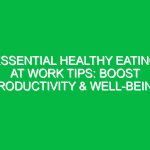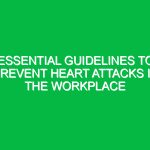“`html
Essential Hearing Protection Guidelines: Avoid Risks and Stay Safe
Introduction
Good morning team! Today, we’re going to discuss an incredibly important topic: hearing protection. It’s essential for our health and Safety on the job. Hearing loss is often irreversible and can significantly impact your quality of life. By understanding and implementing effective hearing protection guidelines, we can avoid risks and stay safe. Let’s dive in!
Understanding Essential Hearing Protection Guidelines
Hearing protection encompasses a variety of methods and equipment designed to safeguard our ears from harmful noise levels. Noise-induced hearing loss (NIHL) is a serious concern in many workplaces, especially in construction, manufacturing, and other industries where loud machinery is prevalent. The World Health Organization reports that 1.1 billion young people are at risk for hearing loss due to unsafe listening practices.
It’s important to note that just because you can still hear, it doesn’t mean your hearing is safe. Many employees may believe that they are not in danger if they can still hear conversations or sounds around them. This misconception can lead to serious health consequences. Remember, the goal of hearing protection is not only to prevent immediate damage but also to promote long-term health.
Key Hazards, Risks, and Safety Considerations
Several Hazards can contribute to hearing loss in the workplace:
- High Noise Levels: Prolonged exposure to noise levels exceeding 85 decibels (dB) can cause irreversible damage to hearing.
- Intermittent Loud Noises: Sudden loud sounds, like gunfire or machinery backfiring, can also lead to immediate damage.
- Inadequate Hearing Protection: Using the wrong type of ear protection or not using it at all poses significant risks.
Ignoring these hazards can lead to severe consequences, including permanent hearing loss, increased stress levels, and decreased productivity. It’s crucial to recognize these risks and address them proactively.
Best Practices, Procedures, & Actionable Advice
To ensure your hearing protection practices are effective, follow these Best Practices:
- Assess Noise Levels: Conduct regular assessments to measure noise levels in your work Environment. Use a sound level meter to determine if hearing protection is necessary.
- Select Appropriate Hearing Protection: Choose the right type of ear protection based on the noise levels and specific tasks. Options include earplugs, earmuffs, and custom-fitted devices. Ensure they are properly fitted to maximize effectiveness.
- Implement a Hearing Conservation Program: Your workplace should have a formal program that includes Training on the risks of noise exposure, proper use of hearing protection, and regular hearing tests.
- Encourage Regular Breaks: Allow employees to take breaks in quieter areas to reduce their overall noise exposure.
For example, a construction site may have areas where noise levels exceed safe limits. Workers should be trained to recognize these areas and use appropriate ear protection at all times. A real-world incident involved a construction worker who neglected to wear ear protection and suffered significant hearing loss after years of exposure. This serves as a reminder of the importance of consistency in using protective equipment.
Regulations, Standards, and Compliance
Compliance with regulations is critical to ensuring Workplace Safety. The Occupational Safety and Health Administration (OSHA) has established permissible noise exposure limits, and employers are required to provide hearing protection when noise levels exceed these limits. Key regulations include:
- osha Standard 29 CFR 1910.95: This standard outlines the requirements for hearing conservation programs in workplaces with noise exposure.
- ISO 1999: This standard provides guidance for calculating noise exposure and assessing the risk of hearing loss.
Staying compliant not only protects employees but also mitigates liability for the company. Regular audits and employee training sessions can help maintain compliance and ensure that everyone understands their responsibilities.
Employee Engagement & Discussion
Now, let’s open the floor for discussion. Think about your experiences with hearing protection:
- What challenges have you faced when using hearing protection?
- Have you noticed any specific situations where noise levels were particularly high?
- How can we improve our hearing protection practices as a team?
Your input is invaluable in creating a safer work environment. Let’s work together to ensure we’re all protected.
Conclusion & Key Takeaways
In conclusion, protecting your hearing is essential for your overall well-being and effectiveness at work. Remember the key points we discussed today:
- Understand the risks associated with noise exposure.
- Utilize appropriate hearing protection consistently.
- Stay informed about regulations and compliance Standards.
- Engage with your colleagues to foster a culture of safety.
Thank you for your attention and commitment to safety. Let’s all make a conscious effort to prioritize hearing protection in our daily routines. Together, we can create a safer workplace for everyone!
“`


